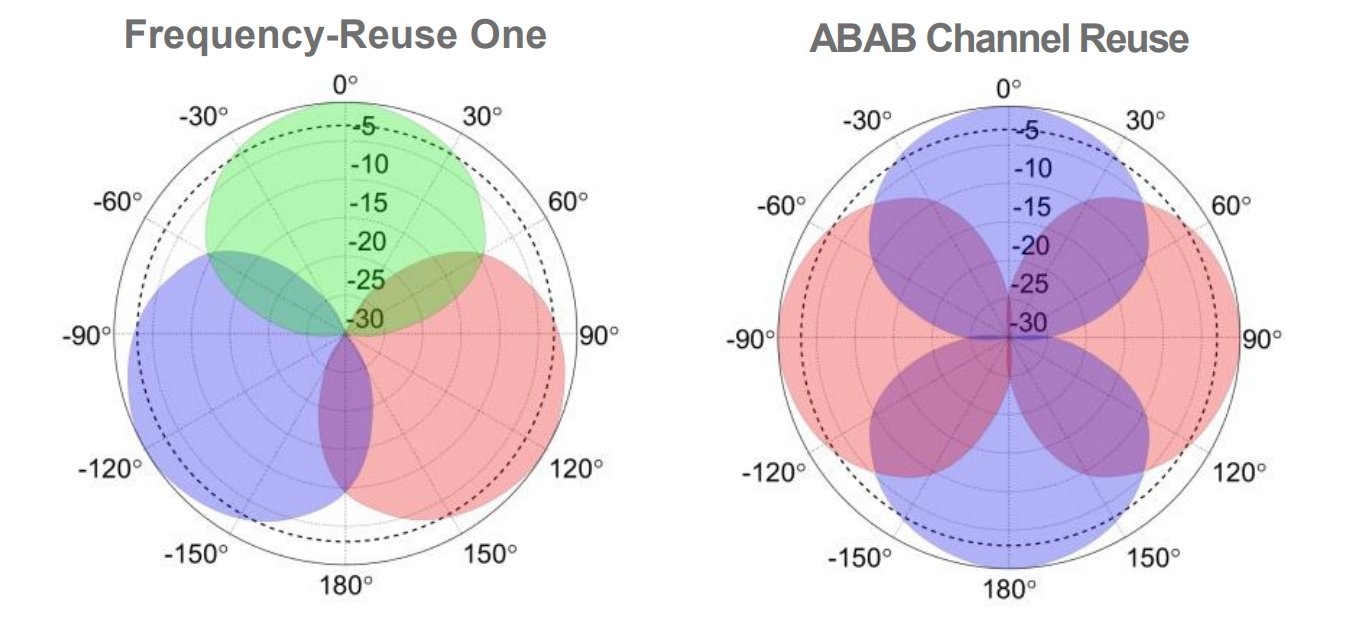Frequency Reuse Plans in 4G / LTE
4G LTE cellular systems address the need of high capacity Wireless Internet services to mobile and fixed devices. Frequency Reuse planning is essential to allow seamless coverage and efficiency use of the available spectrum.
3GPP Long Term Evolution (LTE) is a standard for wireless communications to achieve high spectral efficiency, high peak data rates, as well as flexibility in frequency and bandwidth. By using frequency reuse of one in LTE networks, high spectral efficiency is achieved. However, the Inter-Cell Interference (ICI) resulted from the frequency reuse of one is a main limitation in these networks.
Fractional Frequency Reuse (FFR)
Fractional Frequency Reuse (FFR) has been proposed as an Inter-Cell Interference Coordination (ICIC) technique in Orthogonal Frequency Division Multiple Access (OFDMA) based LTE networks. FFR divides the cell into an inner and an outer region, and then different frequency reuse factors are applied in each region in such a way the interference is reduced. This paper focuses on evaluating two FFR deployment schemes, namely, Strict FFR and Soft Frequency Reuse (SFR) and compares them with the conventional frequency reuse scheme. A broad comparison among all these frequency reuse schemes is performed by using a proposed mechanism which depends on Monte Carlo simulations considering performance metrics such as Signal to Interference plus Noise Ratio (SINR), capacity and throughput. Simulation results show that, the higher SINR achieved by Strict FFR is not reflected in terms of throughput due to the small bandwidth utilization, and Soft Frequency Reuse (SFR) can provide higher cell-edge throughput by increasing the power control factor but this comes at the cost of decreased inner region throughput.
Soft Frequency Reuse (SFR)
Soft Frequency Reuse (SFR) scheme is considered as an interesting approach to efficiently utilize the bandwidth in LTE systems. With SFR, a cell is divided into two parts (the central part and the external part) using different reuse schemes. On the basis of a suitable path loss model, we have been able to characterize the Signal to Interference plus Noise Ratio (SINR) and the probability to use different transmission modes in a cell with SFR. This has allowed us to evaluate the capacity of a cell that can be achieved with SFR. Finally, a cell capacity optimization has been carried out by means of extensive numerical results in order to select both the radius of the cell-center region and the border-to-center power ratio of SFR

In Soft Frequency Reuse (SFR) the cell area is divided into two regions; a central region where all of the frequency band is available and a cell edge area where only a small fraction of the spectrum is available. The spectrum dedicated for the cell edge may also be used in the central region if it is not being used at the cell edge. The lack of spectrum at the cell edge may result in much reduced Shannon Capacity for that region. This is overcome by allocating high power carriers to the users in this region thus improving the SINR and the Shannon Capacity.
Typical LTE Sector Antenna Specifications
LTE Sector Antenna used in Band 42 / Band 43 / Band 48 / CBRS:
2-port sector antenna, 3300-3800 MHz, 65° HPBW, 3.5° fixed electrical downtilt
• High gain and slant dual polarization
• Simultaneously maximize coverage and minimize interference
• Ideal for 3-sector frequency-reuse one with LTE equipment
Frequency Reuse Patterns for LTE base Site

On the left, a 3-sector plan with 3 separate frequencies.
On the right, a 4-sector plan with ABAB re-use. This depends on excellent Front-to-Back ratio on the sector antennas. Note that the patterns are idealised, and real-world sector antennas also have sidelobes
For Further Information
Please Contact Us
